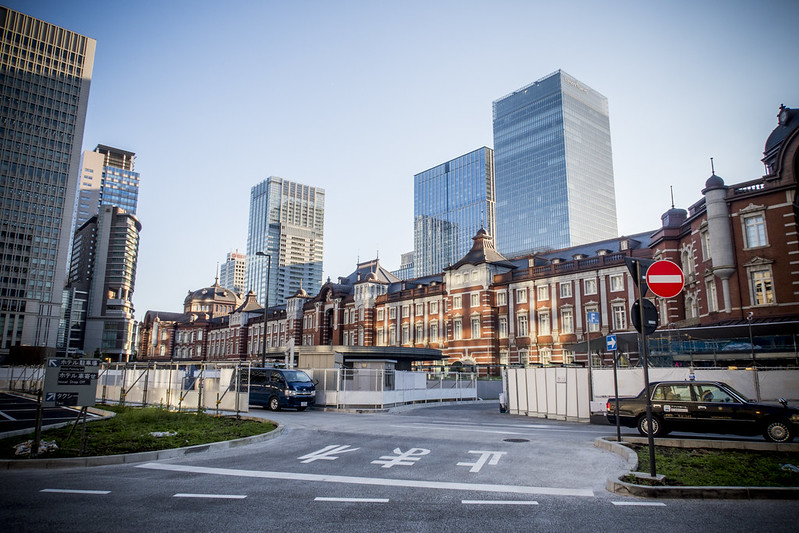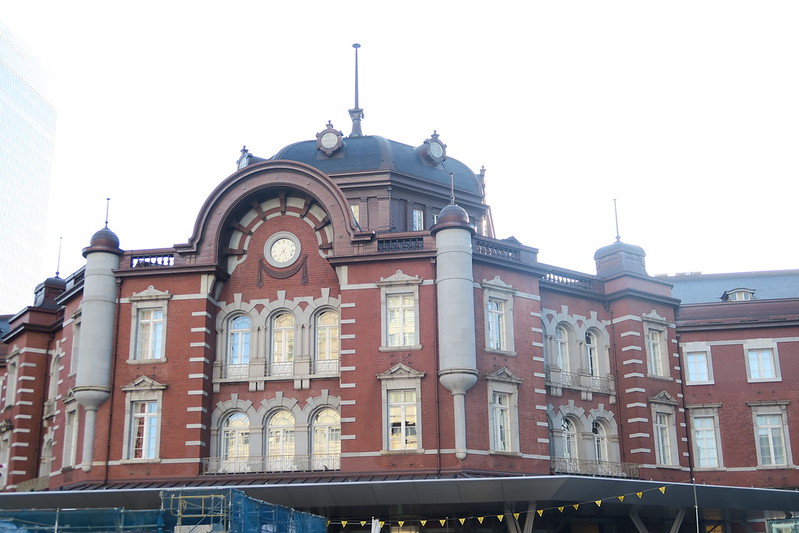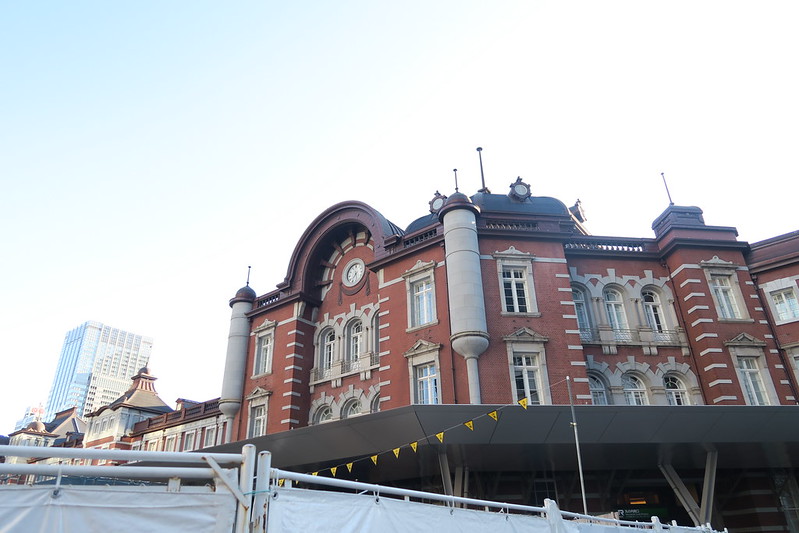Tokyo Station is one of the few stations in Tokyo in which many will no doubt experience the feeling of getting lost.
Similar to Shinjuku Station, it’s a large railway station that is like a labyrinth.
Located in the Marunouchi business district of Chiyoda, Tokyo, it is the main intercity rail terminal in Tokyo and the busiest station in Japan (over 3,000 trains per day) and the fifth-busiest in Eastern Japan.
But it’s also a station which one can find a plethora of shops and for architect enthusiasts, it’s one of the few that features a brick-built facade. In fact, the main station facade has been around since it first opened back in 1914.
Designed by architect Tatsuno Kingo (designer of the Manseibashi Station and nearby Bank of Japan building), who was influenced by his travels to Europe. Tokyo Station was created in Neo-Baroque design and used extensive steel framing and red brick with ribbed domes crowning the north and south wings of the structure.
The steel framing for the building was imported from England and because of the structure, it survived the Great Kanto earthquake of 1923 and the bombings of World War II (a large part of the station was destroyed on May 25, 1945 during a B-29 bombing, including the destruction of the rooftop domes but quickly rebuilt a year later).
A restoration of the building was completed in 2012, which included the restoration of the domed roof structures.
While Tokyo Station was one of his famous designs, Kingo would unfortunately become a victim of the 1918 flu pandemic and die in 1919.





Currently if you visit Tokyo Station, you will notice construction currently being done next to the main facade.
Featuring 10 island platforms serving 20 tracks, there are tracks on top level, underground and the walk from area to area is quite a distance, so have your comfortable shoes ready and as for Google Maps, don’t depend on it while inside, because it will keep pointing for you to go to one direction and then another and personally, it’s just best to follow the directions you see hanging from the train sections before entering a hallway.
Also, good for one to know the various trains knowing which are JR East (green), JR Central (which is typically the shinkansen a.k.a. “bullet train) and Tokyo Metro (Marunouchi Line) in blue.
If you arrived from Narita to Tokyo Station, the first thing I recommend is getting a Suica (preferred) or Passpo card, so you can deposit money into it and start using it immediately when traveling from station to station.
But Tokyo Station is no doubt one of the areas one should visit if they enjoy seeing unique structures in Tokyo. Tokyo Station is no doubt one of Japan’s wonderful structures to take a photo of during the day and night but also, for one who wants to initiate themselves in train station business, Tokyo Station is the place.


